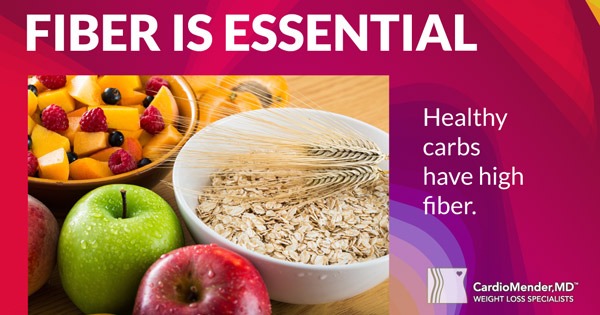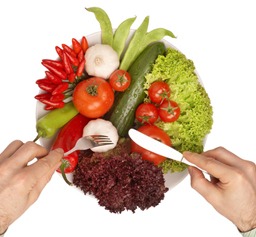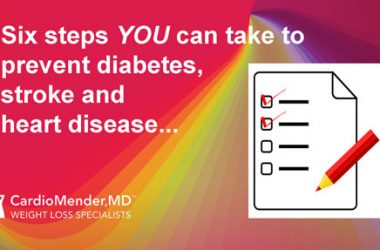And What You Won’t Find on Them That You Need to Know
We see food labels all the time, but do we stop to read them, and if we do, do we fully understand them? Nutrition Facts provide useful information, both in what they say and what they do not say. Dr. Schiff provides an in-depth look at food labels.
In the first of these articles, ‘Interpreting Nutritional Labels – Improve Your Understanding’, we discussed the importance of reading food labels as the first step in making good food choices and how to interpret what it all means. We covered the upper section of Nutrition Facts labels, through Cholesterol. We continue now, starting with Sodium.

Sodium:
Sodium or table salt, which follows Cholesterol on the food label, is frequently used to enhance the taste of a food. It tends to ‘amp up’ the flavor. It has been my experience that many people ‘crave’ salt especially salty, crunchy foods such as chips, fries and deep fried foods like chicken or fish. Recently the food industry began marketing salted sweet foods which have had enormous appeal. Salt is one of the cheapest seasonings in cooking, utilized heavily by restaurants and in preparation of processed foods. Because of this, a typical Western diet contains an overabundance of sodium, a contributor to hypertension, leading to an increased risk for stroke, coronary artery disease, kidney disease and other illnesses. As an aside, when we go out to eat, it is virtually impossible to know how much sodium or, for that matter, what else is in our choices.
Potassium:
Potassium follows Sodium on the Nutrition Facts label and is essential to life. Potassium has many functions in our body. Among the most important are:
- Maintains fluid balance
- Controls electrical activity of the heart and other muscles
- Maintains optimal blood pressure by counteracting the effects of sodium
- Maintains acid to base balance
Most people who consume a Western diet do not get enough potassium. Medical studies support the association between increased potassium and decreased sodium intake, which together demonstrate a reduced risk of dying from all causes1, reduced occurrence of stroke, lower blood pressures, protection against muscle loss, preservation of bone density and fewer kidney stones.2
Several sources of potassium are Swiss chard, spinach, beet greens, beans, avocados, tomatoes, potatoes and bananas.
Total Carbohydrate:
Total Carbohydrate is found next on the food label. Carbohydrates are made up of 2 groups:
- Simple Carbohydrates are comprised of 2 sugar molecules bonded together or a single sugar molecule usually containing very little fiber.
- Complex Carbohydrates consist of many sugar molecules bonded together, often rich in fiber.

Many of us are focused on carbs and have misconceptions about them. I’d like people to understand that all carbohydrates are not the same. Carbohydrates are NOT ‘good’ or ‘bad’. Complex carbohydrates do provide many benefits, however, when consumed as part of a Western diet rich in processed foods and refined grains, most of the beneficial components are removed (i.e. vitamins, minerals, antioxidants and fiber). The refining process makes the food more uniform and extends the shelf life, consequently improving corporate profits. Most refined grains have some of the ingredients partially replenished, ‘fortified’ or ‘enriched’, such as B vitamins and iron. Fiber and antioxidants are NOT typically added back.
As a general rule, eating an abundance of processed refined foods tends to have undesirable long term effects contributing to obesity, cardiovascular disease, type-2 diabetes and, many believe, certain forms of cancer. Most carbohydrates provided by the food industry are refined and converted into high glycemic carbohydrates. This means they cause sugar levels in our blood to spike. So in reality, when we eat foods made with ‘refined’ ingredients, such as bread, pasta, rice, and potatoes, we are eating a serving of sugar containing minimal nutrients. Years ago, when the American Heart Association launched its campaign to ‘cut out the fat’ and reduce animal product consumption intended to reduce cardiovascular disease, the food industry responded by producing ready-made ‘fat free’ processed refined food alternatives. Most ‘fat free’ foods are refined high glycemic carbs. The consumption of this diet emphasizing ‘fat-free’ foods paradoxically contributed to the obesity epidemic and to the rise in type-2 diabetes and cardiovascular disease.
Total Carbohydrates Further Broken Down: Dietary Fiber and Sugars:
Dietary Fiber, next on the food label, is a type of carbohydrate that naturally comes from plants. Fiber has been shown to reduce hunger, reduce sugar spikes and improve the regulation of blood sugar, and help maintain our gut health and our body’s immune system.
The food industry sometimes elects to ‘enrich’ foods with synthetic or an alternative fiber. Dietary fiber is not absorbed by the small intestine. Good sources of fiber are found in fruits, vegetables, whole grains, nuts, seeds and legumes. Even though these foods are a good source of fiber, they also contain non-fiber carbohydrates that are merely a source of calories.
There are 2 Types of Fiber

Soluble fiber dissolves in water. It tends to slow digestion, lower glucose and cholesterol, and decrease the risk of cardiovascular disease. Soluble fiber includes a sub-group called Prebiotics. They help feed and maintain our healthy gut bacteria (Flora) and aid in digestion including absorption of minerals3, maintain the health of the gut lining, reduce inflammation, maintain a healthy immune system4, aid with neurohumoral signaling between the gut and brain, and overall brain health. 5 Good sources of soluble fiber are in psyllium, apples, citrus fruits, leeks, onions, garlic, asparagus and blueberries. Although not recommended during our Acute Weight Loss program, we do also allow the following during our Maintenance Program: oats (highest of the grains), beans, lentils, nuts and peas.
Insoluble fiber doesn’t dissolve and remains in the gut and provides bulk to our stool, which increases transit time, promoting regularity and relieving constipation. This type of fiber helps reduce the likelihood of diverticular disease and some studies show a protective effect in the prevention of colon cancer. Good sources of insoluble fiber recommended during the Acute Weight Loss Program are vegetables such as cauliflower, cucumbers and green beans. During our Maintenance Program whole grain wheat and rice, legumes, tomatoes and nuts are also permitted.
When foods are refined, the fiber is broken down or removed. This increases blood sugar spikes and thus increases the glycemic index of a food. A typical Western diet delivers approximately 15 grams of fiber per day. 6 The American Heart Association recommends that we get at least 25 grams of fiber per day as part of a 2000 calorie diet. 7
The Institute of Medicine gives the following daily fiber recommendations for adults8
|
Age 50 or Younger |
Age 51 or Older |
| Men |
38 grams |
30 grams |
| Women |
25 grams |
21 grams |
And what about Sugar?
Sugar is the section of the Nutrition Facts food label that follows Dietary Fiber. It is interesting to note that there is no reference value or recommendation for the minimum amount of sugar to be consumed daily. In order to remain healthy, our diets must contain essential amino acids and fatty acids derived from protein and fat respectively, in addition to essential vitamins and minerals. That being said, human life does not require that we ever eat sugar.
As stated above, with the exception of fiber, the balance of what is listed as carbohydrates are sugars or that which will be converted into sugars. The sugar listed on the Nutrition Facts food label includes BOTH naturally occurring sugar PLUS the sugar added by the manufacturer. It is important to understand that the Ingredients section on the package may not indicate sugar in the list; this only pertains to ADDED sugar. The Nutrition Facts label includes both naturally occurring and added sugar.
As an example of this, take a look at the food label below, which is for reduced fat milk. Although there is no sugar in the ingredients (added sugar), each serving contains 12 grams of sugar. This is naturally occurring in the milk.

Surprising to most, eating food containing added sugar and eating high glycemic carbohydrates can be addictive. Mark Hyman, a physician for over 20 years, endowed chairman of the Institute for Functional Medicine and recognized author, writes about how sugar, and NOT cocaine, is one of the most addicting substances on the planet.9 Sugar’s integration into our diet has challenged our ability to control its consumption.10 Bottom line, the medical evidence strongly supports the notion of the addictive nature of sugar, which itself is refined, and has dramatically contributed to the obesity epidemic, as well as having adverse health consequences.
Stay tuned there’s much more to this discussion on Nutrition Facts food labels…
Footnotes:
1. Sodium and potassium intake and mortality among US adults: prospective data from the Third National Health and Nutrition Examination Survey, Yang Q et al., Arch Intern Med, doi: 10.1001/archinternmed.2011.257, published online 11 July 2011.
2. http://www.medicalnewstoday.com/articles/287212.php
3. Coxam V (Nov 2007). “Current data with inulin-type fructans and calcium, targeting bone health in adults”. J Nutr. 137 (11 Suppl): 2527S–2533S. PMID 17951497.
4. Jump up^ Seifert S, Watzl B (Nov 2007). “Inulin and oligofructose: review of experimental data on immune modulation”. J Nutr. 137 (11 Suppl): 2563S–2567S. PMID 17951503.
5. Brain Maker: The Power of Gut Microbes to Heal and Protect Your Brain-for Life by David Perlmutter, Kristin Loberg
6. https://www.hsph.harvard.edu/nutritionsource/carbohydrates/fiber
7. http://www.heart.org/HEARTORG/HealthyLiving/HealthyEating/HealthyDietGoals/Whole-Grains-and-Fiber_UCM_303249_Article.jsp – .V7ngkE0rKM8
8. http://www8.nationalacademies.org/onpinews/newsitem.aspx?RecordID=10490
9. Mark Hyman, Daily News- Monday, February 10, 2014, Author of ‘The Blood Sugar Solution’
10. Curr Opin Clin Nutr Metab Care. 2013 Jul;16(4):434-9. doi: 10.1097/MCO.0b013e328361c8b8. Sugar addiction: pushing the drug-sugar analogy to the limit. Ahmed SH1, Guillem K, Vandaele Y. (PubMed.gov.)










